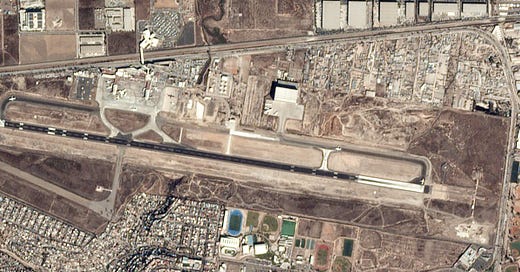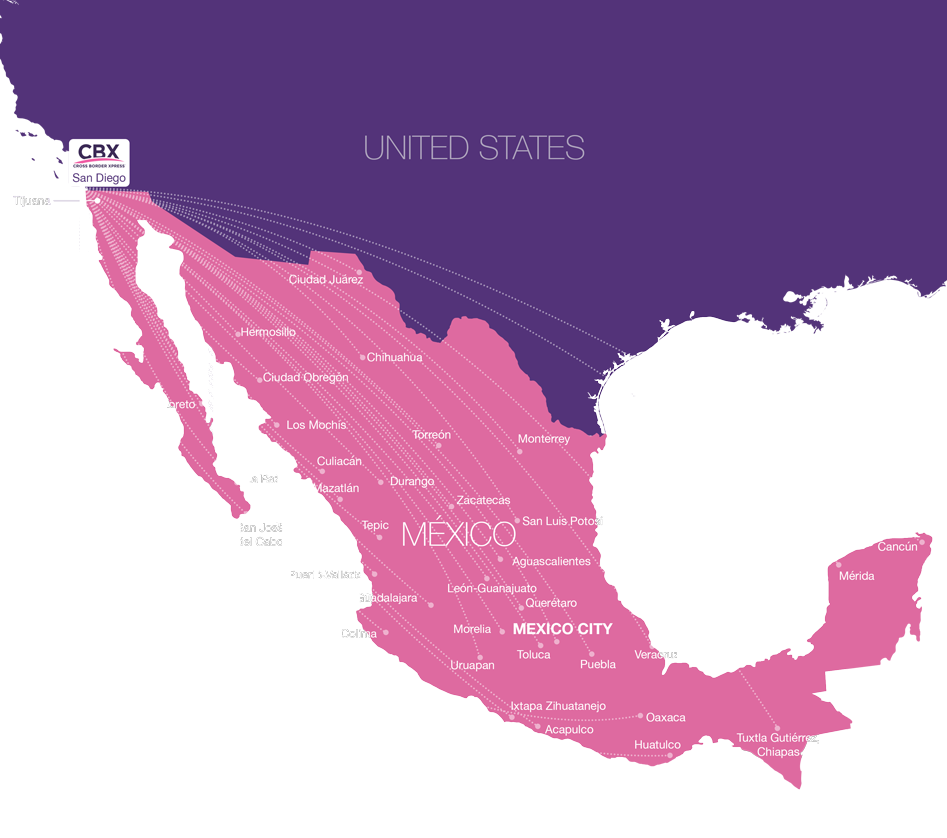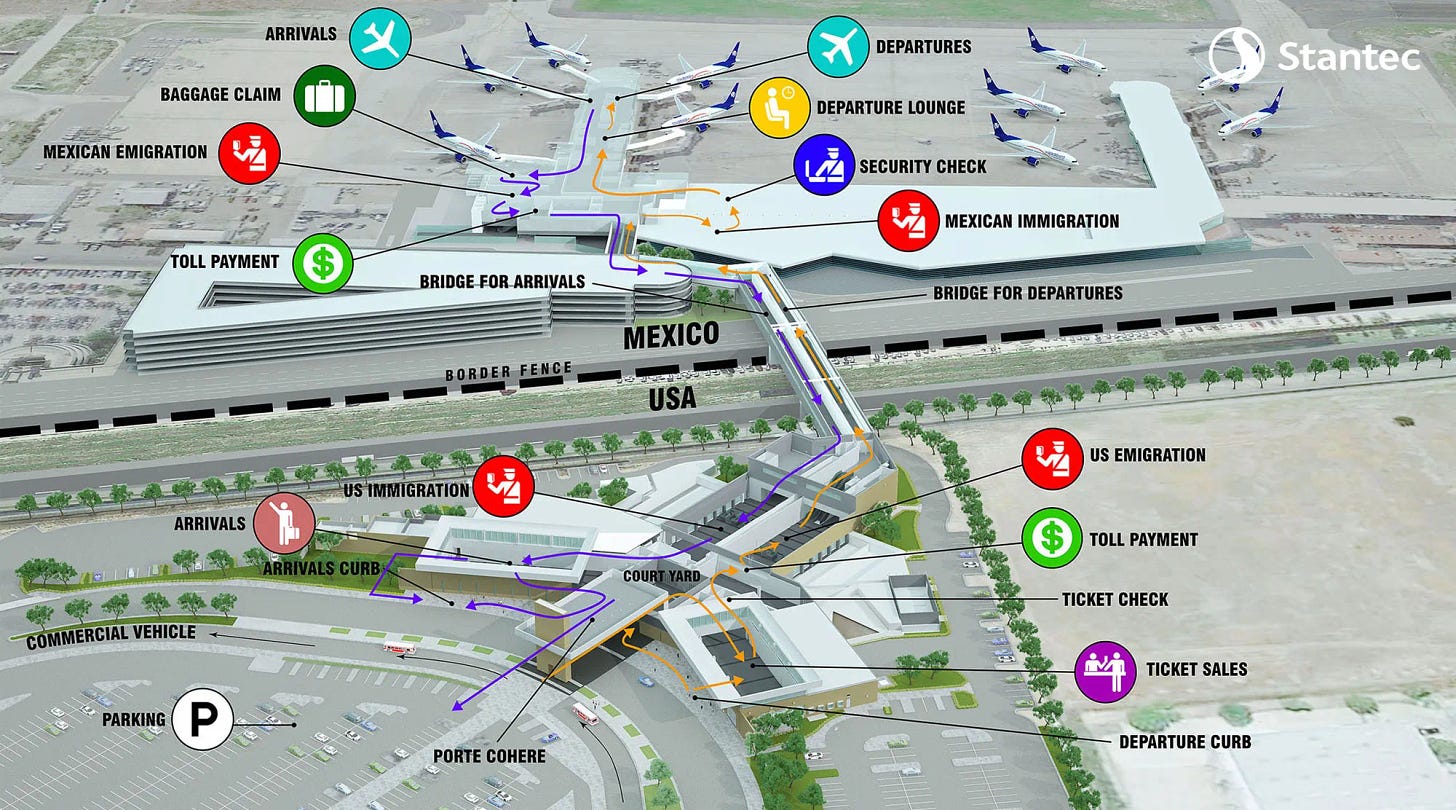The Vanishing US / Mexico Border
How San Diego and Tijuana are building bridges over the border wall
Whenever I travel from Mexico City to my hometown of San Diego, I always fly through the Tijuana Airport. Technically, it’s an international airport. But more importantly, it’s the only true bi-national airport in the world.1
Few travelers know that the Tijuana airport extends to the US side of the border. It is built right against the border wall and a sealed bridge travels up and over the physical fence, allowing quick and affordable travel between San Diego and Mexico.
I’m sharing this for a few reasons.
First, it’s a massive travel hack. If you’re traveling between Southern California and Mexico, it almost always saves you money (it’s a domestic flight within Mexico) and time, thanks to highly expedited customs and immigrations cooperation. And with the surging cost of air travel, the savings add up.
Secondly, the Tijuana airport connects to 39 destinations within Mexico, making it easy to fly direct to many airports not serviced by LAX or San Diego. It also has direct flights to China and Japan, a biproduct of the city’s many maquiladoras (export-focused factories for foreign companies, many of which are Asian).
But more importantly, it’s a bright star in the often rocky relationship between my countries of birth and residence, an area of cooperation that has advanced despite (and during) surging nationalism, and an example of the many overlooked ways the two countries are coming together.
In the coming weeks, I’ll share some photos and tips from my recent trip through Southern California by train. But I thought I’d start with a primer on how San Diego and Tijuana are increasingly becoming a single city separated by a shared border.
In fact, San Diego-Tijuana is the world’s largest binational metropolitan area in the world, with a combined population of 5 million people. And as I witness the ties deepen between Mexico City and other North American cities, my hometown is an example of cutting edge bi-lateral collaboration.
Many of the following facts are pulled from the excellent book, Vanishing Frontiers: The Forces Driving Mexico and the United States Together by journalist Andrew Selee. The first chapter is dedicated to SD/TJ, which warmed my heart and inspired this article.
The cross-border airport (called Cross Border Express, or CBX) came about when San Diego city planners were looking to expand our airport, which is wedged between downtown and the harbor and constrained to a single runway. This has limited the city’s economic expansion, as larger planes can’t land here. But Tijuana airport has much more runway space and capacity for planes large enough to cross the Pacific.
So instead of expanding or relocating San Diego’s airport, they simply built a bridge over the border straight into the Tijuana airport. Now San Diegans can check into their flight on the US side, breeze through customs and be eating Ensenada-style tacos in Tijuana 20 minutes later.
For Mexicans, the American terminal has car rental agencies, shuttles as far as Disneyland, and a relatively smooth immigration experience (from what I have been told). It’s also right next door to the Otay Mesa outlet malls for bargain shopping.
CBX was funded by private investors, who took a gamble on the concept. But it’s been a huge hit. I used it shortly after its opening in 2015 on my first trip to Mexico City. Since moving here, it’s become the only way I travel to California. And from what I have witnessed, it’s a common way for Mexican immigrants to visit family back home.
During my recent trip, I was surprised to enter completely remodeled terminal that was even faster and easier than the previous one. The upgraded terminal cost $2B pesos ($100M USD) and is 83% bigger, has 75% more capacity and 50% more immigration processing lines. And with plans to expand service in Asia and Latin America, it’s an example of how the cities are fusing into a major economic region.
After a couple of years of shuttling between Mexico City and San Diego, I’ve come to appreciate these connections even more. It’s no surprise that both San Diego and Tijuana have some of the best craft beer in their respective countries - brewers frequently cross the border to swap recipes. And while Americans fly to CDMX to eat in Pujol or Contramar, the city’s top chefs are building outposts in New York and LA.
Some other examples include how maquiladores increasingly send goods back and forth across the border during different stages of production, how La Rumorosa wind farm east of Tijuana produces green energy for San Diego Gas and Electric, and how the entire state of Baja California is connected to the US power grid - not Mexico’s.
More importantly, the percentage of San Diegans who say their city’s future is closely tied to that of Tijuana has gone up from 9% in 2012 to over 70% now - perhaps a result of some of my pro-Tijuana travel videos from my early Vagabrothers days… ; )
But clearly challenges remain. For too many, the border is an all too real barrier. There are many Mexicans (and other nationals) who are unable to cross the border in pursuit of the American dream. And while these stymied immigrants often settle in Tijuana and enrich the local culture (especially the food), its impossible ignore how much easier it is to travel south than north.
And despite Mexico City’s explosive popularity with millennials, many Americans continue to view the border as a source of violence and unwanted problems, even as AeroMexico trolls such bigots in this viral ad from 2018:
Nevertheless, in an era where so many call for more walls, it’s refreshing to see bridges being built between cultures. And I hope The Missive can do the same.
For more info about using CBX, keep an eye out on my TikTok for a video explainer coming soon. You can also check out the CBX website and the book I referenced, Vanishing Frontiers: The Forces Driving Mexico and the United States Together by journalist Andrew Selee.
That’s all for this week. If you want me to write more about these cross-border topics, please let me know in the comments. And if you’ve ever used the Tijuana / CBX crossing, share your experiences as well.
Talk soon,
Marko
Yes, the Geneva airport straddles the Swiss/French border. But borders within the European Union are mere formalities compared to the heavily militarized US southern border.










Marko, it's interesting that the idea of San Diego and Tijuana becoming one city is relatively new.
I beg to differ. I was a reporter with the old Blade-Citizen in Oceanside (RIP) in the mid-'80s and early '90s (freelancer in the '90s) and there was a ton of talk and articles about that very idea, due in no small part to NAFTA (recently passed) and the subsequent increase in maquiladoras.
(Which were considered a bad thing at time because they were another way the U.S. could keep manufacturing wages down..BUT without having to move to India or China....)
But back to TJ/SD as one...
In addition, there also was a lot of talk then that people had it wrong: Tijuana didn't need San Diego, SD needed Tijuana because if Tijuana were to disappear, the San Diego economy would suffer greatly due to having no really inexpensive workers right nearby.
I believe that's even more so today.
I'd love to hear your thoughts on this.
Also, if I may ask: where did you grow up in SD County? I'm from Cardiff/Encinitas. Grad of UCSD.
I live in La Paz (Baja California Sur) and have used the CBX numerous times. Super easy way to get to San Diego (and beyond). Also, thanks for the link to Andrew Selee’s book. Looks really interesting. I’ve added it to my list of books to read.